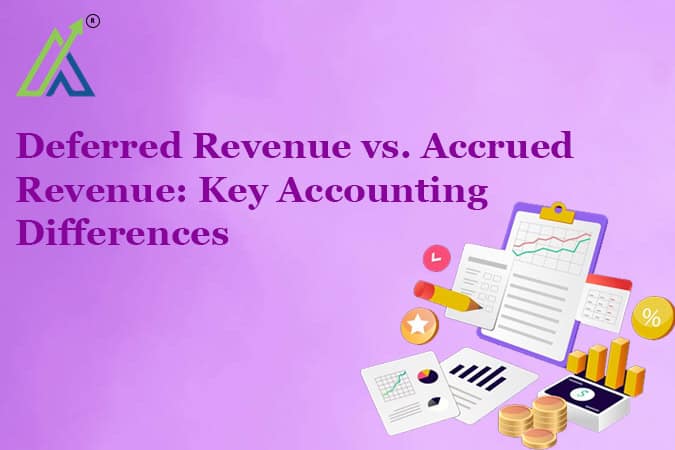Cash flow refers to the movement of cash and cash equivalents into and out of a business, determining its liquidity and financial health. It is crucial for businesses to manage cash flow effectively to meet immediate financial obligations and support growth. By analyzing cash flow, businesses can identify areas for improvement, optimize working capital, and make informed decisions that align with long-term financial goals. Proper management ensures financial stability and operational efficiency.
What is cash flow?
Cash flow can be described as the amount of cash and cash equivalents that shifts in and out of the business. It figures out the amount of cash used or formed in a specific period of time. . Along with a potential range of inflows, its research also pinpoints the current sources of cash flow.
The current flow of cash during a specified period can be known by decreasing the opening balance of a specified period from its closing balance. After calculation, cash flows can be shown as negative or positive. A positive balance shows that the company has enough cash to achieve immediate liquidity requirements, while on the other hand, a negative balance shows a restricted liability.
The cash flow of a company is required to be evaluated with the income statement as well as the balance sheet of the company to identify its real liquidity position. Additionally, an increasing flow of cash is not guaranteed to always be a positive sign and is required to be evaluated thoroughly to come to a final decision.
Strategies to Manage Cash flow
To effectively manage cash flow and ensure your business stays on track with its financial goals, it’s important to implement a variety of strategic approaches. Here are some strategies that can help improve your cash flow management:
Connect your long-term objectives with your capital plan
In the event of creating the capital strategy, it is advised to consider the business plan for the time period of three to five years. Understand well about the current position of the business and the desired position of the business. Then the real cash flow that is required to be attained for reaching the goals of the business can be known.
Manage your working capital in a constructive manner
As we know, the working capital of the business can be described as the sum of cash flow and non-cash assets and deducting liabilities from it. To boost the working capital of any business, better cash flow is required, and for that reason, any business needs to know about these below factors:
Days Sales Outstanding (DSO): How long it typically takes for clients who use credit to get cash after making a transaction.
Days Payable Outstanding (DPO): How long it typically takes the company to pay its suppliers and creditors.
Days Sales in Inventory (DSI): How long does it typically take to turn inventory into sales? Days Inventory on Hand (DIH) is another name for it.
To reduce your DSO, think about enforcing stricter timelines for accounts receivable. Reduce inventory for a lower DSI and extend your accounts payable schedule for a higher DPO. You can enhance controls, increase visibility, and improve real-time data availability at lower transaction costs with the newest integrated payables workflow and electronic payment features.
Revise your approach to investing
Reevaluate the rules and objectives that influence your investment choices, such as cash flow plans and when to buy equipment, and compare them to the state of the economy. Assemble a group that can stick to your investing plan and make choices based on liquidity.
Purchase a trustworthy money management system
Your financial management system determines how well your cash management tactics work. If you haven’t updated to a new system in a long time, you may be vulnerable to poor processing rates, restricted reporting capabilities, data breaches, and data losses. These issues can be resolved with a contemporary financial management system, which also offers:
Consolidated summaries of funds from all funding sources across all accounts; customizable cash flow management and control solutions; sophisticated capital planning tools; more insightful financial statements; increased productivity and decreased waste; better forecasting and scheduling; and improved data security.
Improve your cash flow projections to lower your capital requirements
Capital is necessary for the operation of your business; however, the greater the reduction in capital required, the more favorable the returns will be. By releasing additional capital, your company’s value will increase and cash will be released. Depending on your capital composition, this could result in increased owner returns or reduced interest costs.
What are some strategies for reducing the amount of funding your company requires?
- Lower the cost of carrying inventory: Capital can be tied up in the management and storage of finished items, unfinished goods, or raw resources. To improve cash flow, speed up deliveries and reduce inventory levels.
- Modify the conditions of payment for suppliers and customers: If at all feasible, prolong your supplier payments and shorten your customers’ periods of payment.
Pay careful attention to seasonal and cyclical cash flow patterns as you modify your capital requirements. This will allow you to engage in expansion without running out of money at a crucial juncture for your company. Create cash flow statements and financial reports often to keep track of your business’s working capital needs and make appropriate funding allocations.
Manage all of your accounts together
Determine which of your accounts have extra money, then transfer it to the appropriate location. Combining money from several sources lessens the need for a line of credit and keeps extra money out of ineffective accounts. Additionally, it facilitates data reconciliation for your receivables.
Make use of digital resources
Modern accounting and banking technology will facilitate the tracking and management of cash flow, allow your employees to do financial activities more quickly, and guarantee quicker, safer, and less expensive electronic transactions.
- Online banking: The health of your business depends on knowing how much money is in each of your accounts and controlling when, when, and how you spend that money. Through a secure connection, you may examine current and past balances, as well as pending and posted transactions, with online banking, which gives you rapid access to real-time information on all of your accounts.
- Integrated accounting: You may upload information from your credit and bank accounts to an integrated accounting system. In order for you to make decisions that impact your cash flow with confidence, this system helps guarantee that reports on your accounts contain correct and current information.
Gather your financial information for forecasting
Data footprints are produced by electronic payments and other financial activities, and you may utilize this digital data for internal accounting, reporting, and cash flow forecasting. In order to answer important business problems, such as those pertaining to cash flow and capital management, predictive modeling software employs a combination of artificial intelligence and machine learning to slice and dice important business data. Effective modeling software may identify trends that are missed by routine reporting and analysis, increasing prediction accuracy and facilitating better corporate decision-making.
Questions to understand your ability
Q1.) What does a positive cash flow indicate for a business?
A) The company has enough cash to meet its immediate liquidity requirements.
B) The company is making losses in its operations.
C) The company has excess liabilities.
D) The business is facing restricted liquidity.
Q2.) Which of the following strategies is recommended to improve cash flow by reducing Days Sales Outstanding (DSO)?
A) Enforce stricter timelines for accounts receivable.
B) Increase the inventory stock.
C) Delay supplier payments.
D) Offer longer payment terms to customers.
Q3.) How can a business reduce its capital requirements to improve cash flow?
A) By increasing the inventory of raw materials.
B) By extending the payment terms with customers.
C) By reducing inventory levels and speeding up deliveries.
D) By increasing the capital expenditure on equipment.
Q4.) What is the purpose of integrating accounting software with online banking in cash flow management?
A) To increase the inventory stock.
B) To speed up financial transactions and ensure safer payments.
C) To reduce the overall working capital.
D) To generate more income for the business.
Q5.) Why is it important to evaluate cash flow alongside the income statement and balance sheet?
A) To determine the company’s growth potential.
B) To understand the real liquidity position of the company.
C) To increase the amount of available inventory.
D) To evaluate the effectiveness of the marketing strategy.
Conclusion
In conclusion, managing cash flow effectively is essential for ensuring the financial stability and growth of a business. By connecting long-term goals with capital planning, improving working capital, and leveraging modern financial tools, businesses can maintain healthy cash flow. Regular forecasting, strategic investments, and streamlined processes can help minimize capital requirements and improve liquidity, ultimately supporting informed decision-making and sustainable success.
FAQ's
The money coming into and going out of a firm is known as cash flow. It displays the amount of money a company has on hand to run its day-to-day operations.
Simple! Subtract the opening balance from the closing balance. Positive cash flow means you’re good on liquidity, negative means you might be in trouble.
Link your goals with capital planning, watch your working capital, rethink your investments, and always keep cash flow projections tight.
It’s the number of days customers take to pay after buying on credit. Lower DSO = better cash inflows.
Cut down on inventory costs, stretch supplier payments, and get customers to pay faster.
It helps organize funds, improve predictions, and secure your data while boosting overall efficiency.
Online banking and integrated accounting systems give you real-time updates on your cash. Fast, secure, and simple.
Forecasting helps you predict cash needs in advance. It uses data and smart software to spot trends, making it easier to manage future finances.





